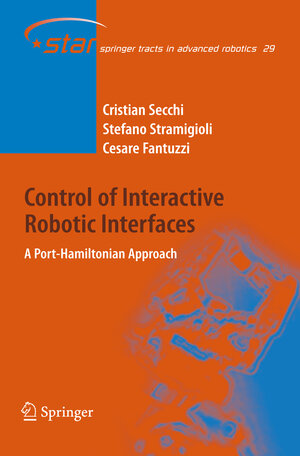
From the reviews:
„This book deals with the important problem of modeling and controlling the interaction between two physical systems—from one side the robot and from the other side its environment. … It is a suitable tool to formally model physical systems based on the energy concept and its relations. The authors introduce the energy-based control to the modeling and controlling phase of interactive robotics interfaces. … The theoretical considerations and solutions are well interpreted with some practical examples.“ (Aleksander Michal Nawrat, Mathematical Reviews, Issue 2008 f)
Control of Interactive Robotic Interfaces
A Port-Hamiltonian Approach
von Cristian Secchi, Stefano Stramigioli und Cesare FantuzziThis monograph deals with energy based control of interactive robotic interfaces and the port-Hamiltonian framework is exploited both for modeling and controlling interactive robotic interfaces. Using the port-Hamiltonian framework, it is possible to identify the energetic properties that have to be controlled in order to achieve a desired interactive behavior and it is possible to build a port-Hamiltonian controller that properly regulates the robotic interface by shaping its energetic properties.
Thanks to its generality, the port-Hamiltonian formalism allows to model and control also complex interactive robotic interfaces in a very natural way. In this book, a port-Hamiltonian approach for regulating the interaction between a robot and a local environment, a virtual environment (i. e. haptic interfaces) and a remote environment (i. e. bilateral telemanipulation systems) is developed.






